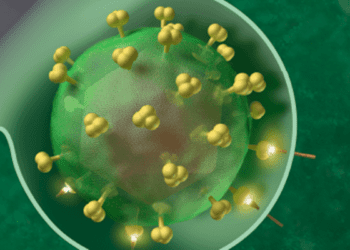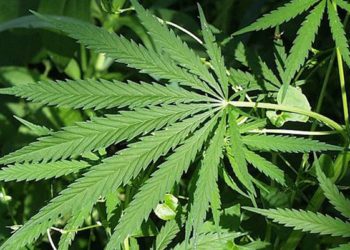Wellness check: Mental health
Variation in antipsychotic medication responsiveness present amongst schizophrenia patients
1. In this study, both individual patient and study-level analyses revealed a negative correlation between placebo response and treatment effect, as measured with the Positive and Negative Syndrome Scale (PANSS) to assess symptom severity in schizophrenia patients.
2. Furthermore, treatment effect heterogeneity showed variation in antipsychotic-specific effects among individuals with schizophrenia.
Evidence Rating Level: 1 (Excellent)
Individuals with schizophrenia have a broad range of symptomatic responses to antipsychotic treatment, as commonly observed by practicing psychiatrists. Given the possible benefits of tailoring treatment optimized to the patients, quantifying treatment effect heterogeneity (defined as variations in medication-specific effects) in schizophrenia is critical. Specifically, it is important to further elucidate the relationship between treatment effect and placebo response. In the absence of this characteristic, an increasing corpus of literature cannot be accurately interpreted.
The present study estimated this correlation using individual patient data and study-level treatment effects from clinical trials, which were applied to a variability meta-analysis to formally estimate the heterogeneity of antipsychotic effects amongst schizophrenia patients. Individual patient data from adult patients aged 18-65 years old receiving antipsychotic therapy (n=384) or placebo (n=88) were included from The Yale University Open Data Access database. Study-level data of schizophrenia patients aged 18-65 years old were included in a meta-analysis of 66 clinical trials (n=17,202). Study outcomes analyzed symptom severity in schizophrenia patients using the PANSS.
Study results demonstrated that in both individual patient and study-level analysis, there was a negative correlation between placebo response and treatment effect. Furthermore, a meta-analysis of treatment effect heterogeneity using the most conservative of these estimates revealed variation in antipsychotic-specific effects among individuals with schizophrenia. Notably, the top quartile of individuals experienced healthy treatment effects of 17.7 points or better on the PANSS total score, whereas the bottom quartile had a treatment effect worse than placebo. However, this study was limited by a correlation detected across research at the study level that may not reflect correlation at the person level, which is known as aggregation bias. Nonetheless, this study was significant in supporting the notion that in schizophrenia, there is significant interindividual variation in terms of symptomatic response to antipsychotic treatment.
Digital therapy may improve sustained attention amongst patients with depression
1. AKL-T03 is a digital therapy that works by activating the brain’s fronto-parietal networks to increase attention and related attentional control processes.
2. In this study, treatment with AKL-T03 led to a significant improvement in sustained attention in comparison to control, amongst patients with depression.
Evidence Rating Level: 2 (Good)
Concentration, decision-making, sluggish thinking, and forgetfulness are all reported challenges for those with major depressive disorder. Multiple studies have found that patients with depression score worse on neuropsychological tests of memory, attention, and executive function. Patients with significant depression and cognitive abnormalities have a restricted number of therapeutic options. The goal of the study was to see if AKL-T03, an investigational digital therapeutic device that triggers the fronto-parietal networks of the brain, might improve cognitive function in adults with depression and documented cognitive impairment.
In this double-blind randomized controlled trial, patients aged 22-55 years old with residual mild-moderate depression and cognitive impairment whilst on stable antidepressant medication were included. Patients with comorbid psychiatric illnesses and active suicide risk or ideation were excluded. Patients were randomized to either the AKL-T03 intervention (n=37) or an educational-styled digital control (n=37). The primary outcome of the study assessed change in sustained attention from baseline, as measured by reaction time for performance using the Test of Variables of Attention (TOVA).
Results demonstrated that AKL-T03 greatly improved performance on the primary outcome measure of sustained attention in adults when compared to the control condition. However, this study was limited as it used clinical research centers and particular inclusion and exclusion criteria, which could have restricted the generalizability of findings. Regardless, the intervention was well endured. The intervention’s digital aspect makes it more accessible to patients who would otherwise be unable to find a solution to their depression-related cognitive impairments.
Findings show that bipolar disorder-II treatments may be used to prevent cannabis use disorder
1. In most situations, CUD in probands and families began before subtypes of mood disorders.
2. Increased risk of Cannabis use disorder (CUD) among family members of probands with Bipolar Disorder-II suggests that CUD and BP-II may have a similar underlying disease.
Evidence Rating Level: 2 (Good)
The most widely used illegal substance in the United States is cannabis.is the most prevalent substance use disorder, affecting 4.8 million people in the United States in 2019. Previous literature has identified a link between CUD and other psychiatric comorbidities, such as depression and bipolar disorder. However, the stability of these conclusions has been called into question by the inconsistency seen across different studies. As such, this study aimed to further elucidate potential mechanisms underlying the relationship between CUD and mood disorders.
In this cross-sectional controlled family study conducted in Washington, DC, the United States, semi-structured diagnostic interviews and family history records were used to evaluate lifetime DSM-IV disorders in relatives and probands. With additional factors taken into account, mixed-effects measures were used to assess the familial aggregation and coaggregation of CUD with mood disorders. 586 adult probands (55 with CUD, 186 with bipolar disorder) and 698 first-degree relatives (68 with CUD, 91 with bipolar disorder) who were proficient in English were included in the study. The primary outcome assessed for lifetime CUD in first-degree relatives.
Study results supported a familial clustering of CUD. CUD amongst probands was associated with CUD in relatives. Furthermore, bipolar disorder II (BP-II) in probands was associated with an increased risk for CUD amongst relatives. Interestingly, bipolar disorder I and major depressive disorder in probands were not associated with CUD amongst relatives. Finally, amongst relatives, CUD was associated with mean age, major depressive disorder, and BP-II. However, this study was limited by not having the possibility of investigating potential connections between mood disorders and CUD due to the cross-sectional data. As well as a limited percentage of probands and their families fit the CUD criteria, despite the sizeable overall sample size. Nonetheless, These findings point to a possible role for BP-II treatments as CUD prevention.
Excitatory noninvasive brain stimulation interventions improved negative symptoms in schizophrenia
1. Excitatory Noninvasive Brain Stimulation Intervention (NIBS) protocols over the left dorsolateral prefrontal cortex were associated with significantly large improvements in the severity of negative symptoms.
2. None of the investigated NIBS approaches was associated with significantly different changes in positive symptom severity compared to control groups.
Evidence Rating Level: 2 (Good)
According to the 2019 Global Burden of Disease Study, schizophrenia presents a significant burden worldwide. The negative symptoms of schizophrenia significantly impact patients’ quality of life and unfortunately, respond poorly to antipsychotics. As an alternative, noninvasive brain stimulation (NIBS) therapies may be successful in alleviating these symptoms, but their effectiveness has not yet been studied. As a result, the objective of the present study was to evaluate the efficacy of NIBS interventions in alleviating the negative symptoms of schizophrenia.
Of 4867 identified records, the present study included 48 randomized clinical trials (n=211, 30.6% females) from database inception to December 2021. Studies were included if they included patients with schizophrenia who underwent NIBS interventions. Studies were excluded if they did not investigate negative symptoms and included patients other than schizophrenia/schizoaffective disorder. The Preferred Reporting Items for Systematic Reviews and Meta-analyses (PRISMA) guidelines were followed. Pair-wise meta-analytic procedures were conducted using a random-effects model. Results demonstrated that NIBS treatments over the left dorsolateral prefrontal cortex were linked to a large reduction in the severity of negative symptoms. Furthermore, none of the investigated NIBS approaches was associated with significantly different changes in positive symptom severity.
Despite these findings, the study was limited by the heterogeneity of participants which may have underpowered the study. However, the present study demonstrated the potential for NIBS to relieve the negative symptoms of schizophrenia.
Image: PD
©2022 2 Minute Medicine, Inc. All rights reserved. No works may be reproduced without expressed written consent from 2 Minute Medicine, Inc. Inquire about licensing here. No article should be construed as medical advice and is not intended as such by the authors or by 2 Minute Medicine, Inc.




![2 Minute Medicine: AI Roundup [May 2nd, 2025]](https://www.2minutemedicine.com/wp-content/uploads/2025/05/Untitled-design-350x250.png)


